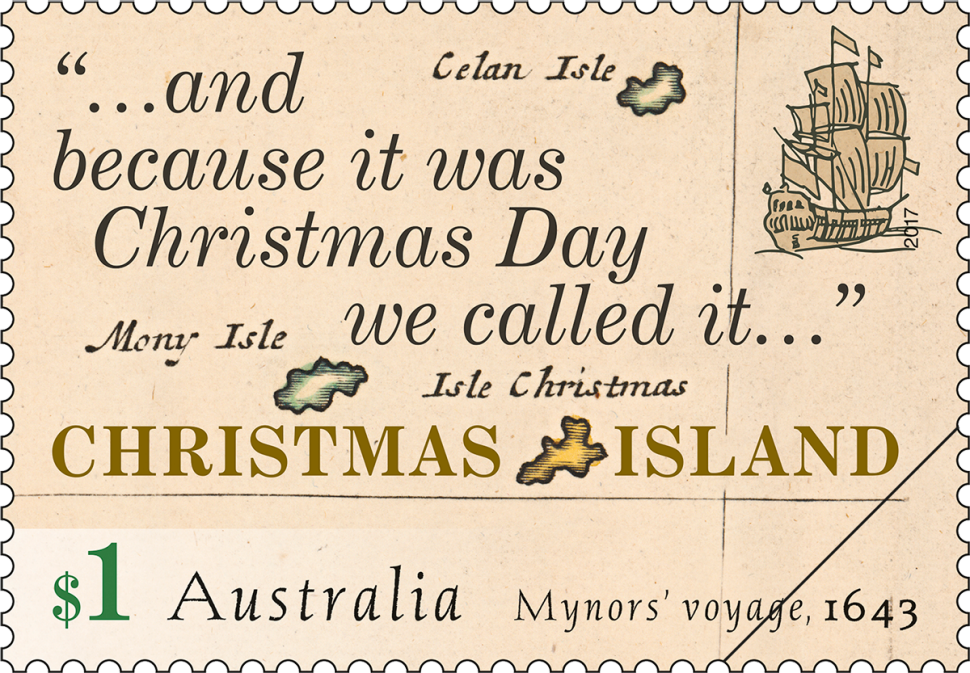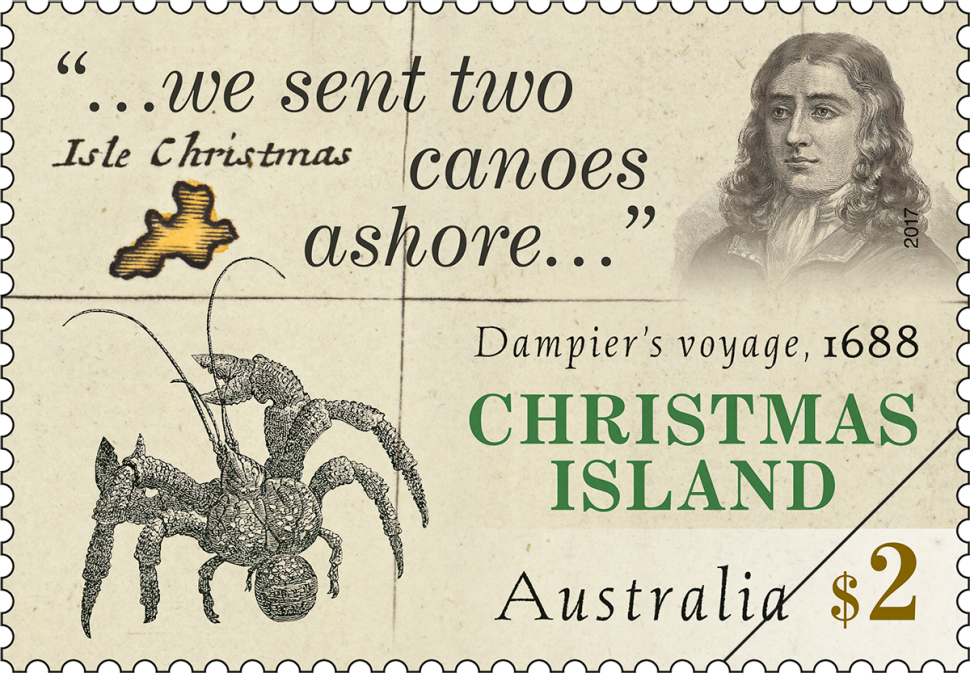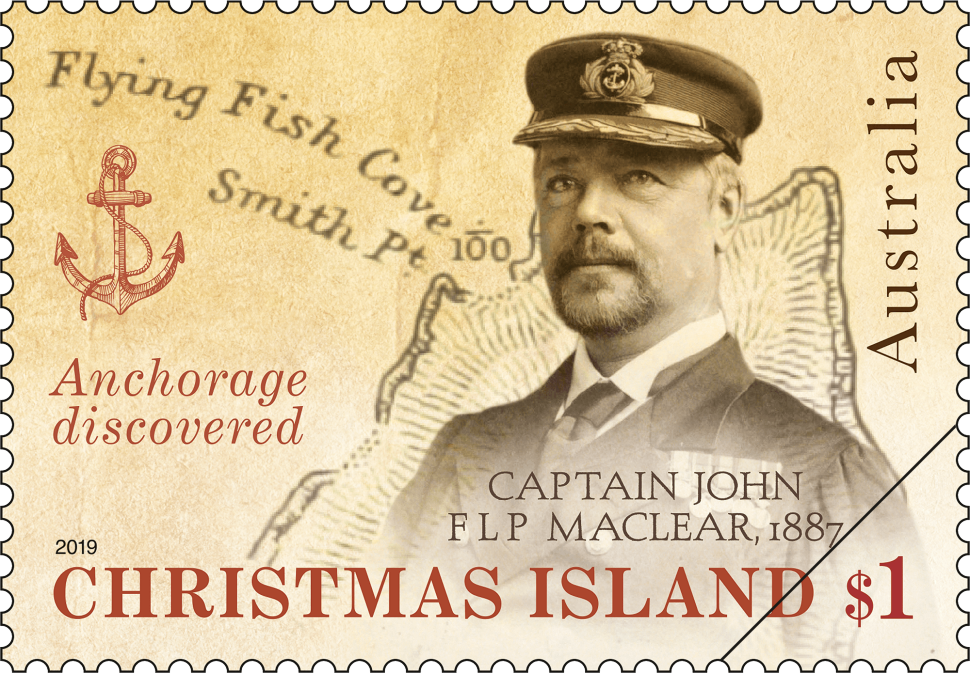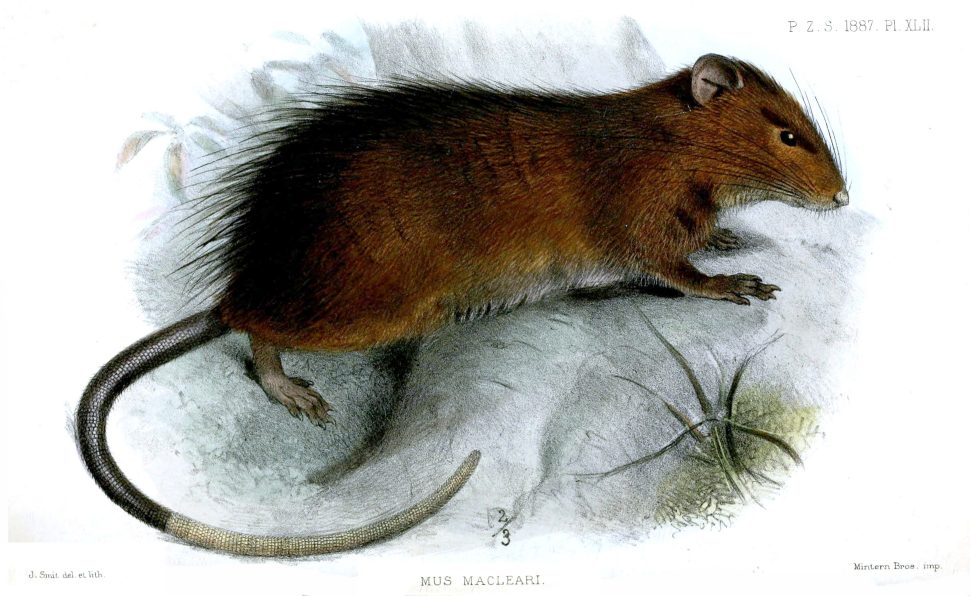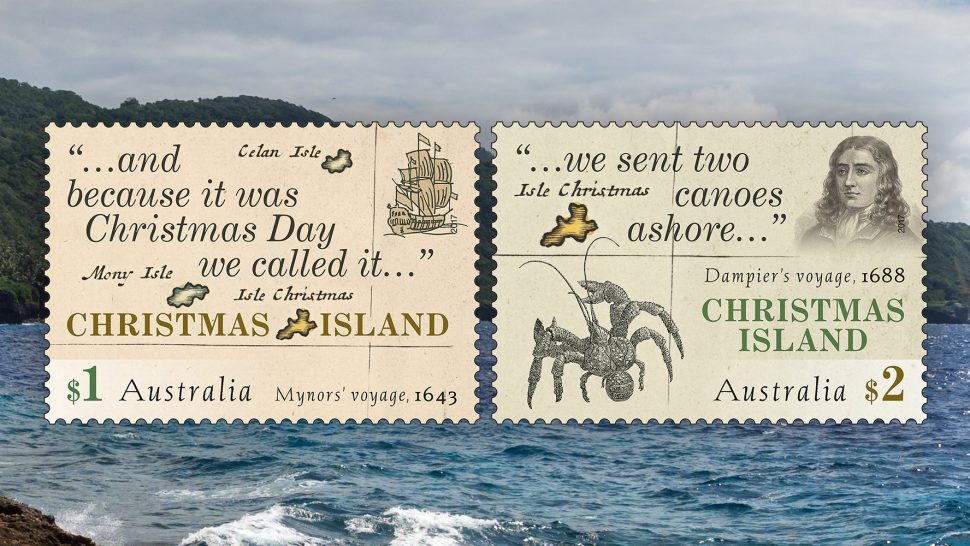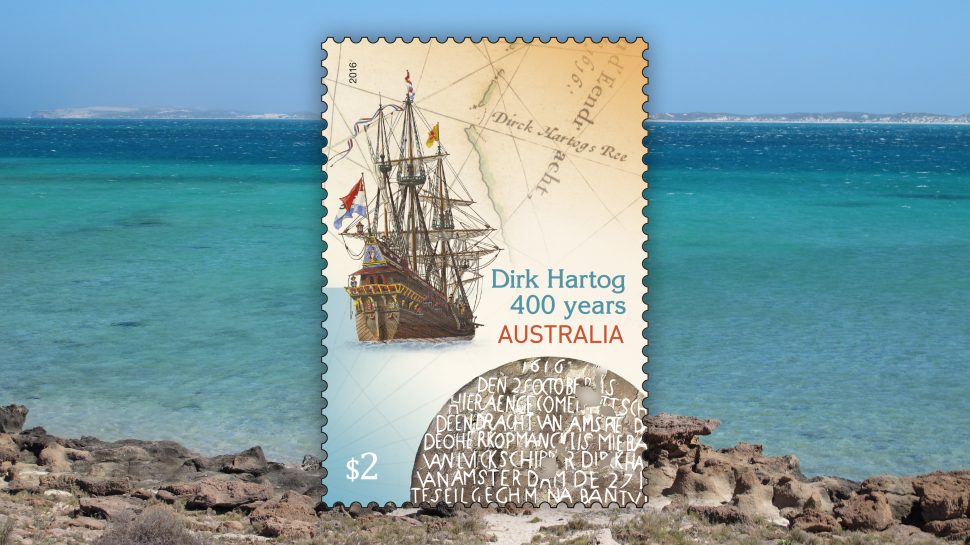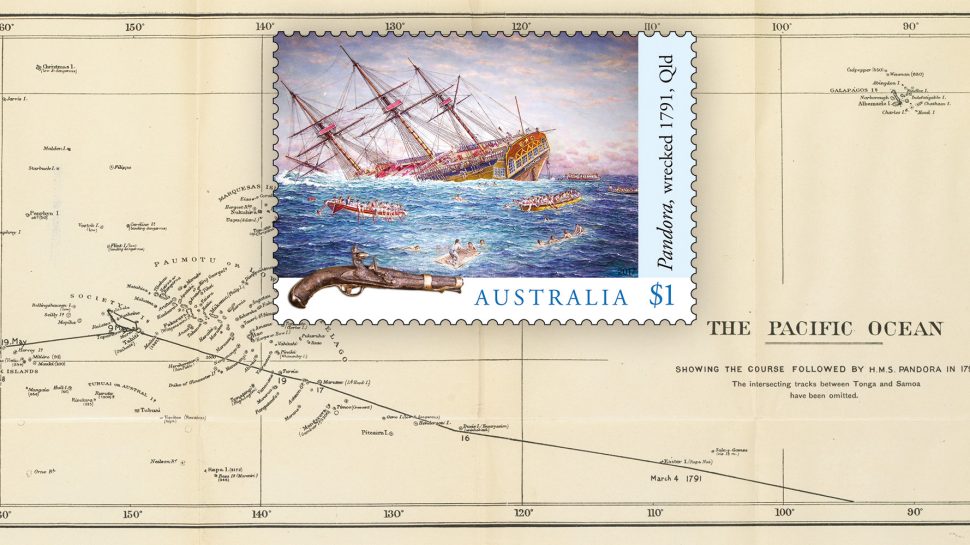The first recorded sighting of Christmas Island occurred in 1615, by Richard Rowe, master of the Thomas. The Christmas Island: Early Voyages stamp issue (2017) looked at two other significant 17th-century voyages to Christmas Island. The first was that of Captain William Mynors, who sailed past in 1643 and named the island “Christmas Island”.
The second voyage featured in the 2017 stamp issue was that of the Cygnet (with William Dampier on board), which resulted in the first recorded visit ashore, in 1688. Crew members returned to the ship with large birds and crabs to eat, as well as wood to repair their ship.
Visible in the background of each stamp is a map, circa 1707, by Joachim Ottens. As well as “Isle Christmas”, it features more than one island, where there should only be one, with the names “Mony” and “Celan”. This was typical of maps of the era. In fact, it wasn’t until the 19th century that “Christmas Island” became the established name, in part because the British has taken possession of the island by that point.
The Christmas Island: Early Voyages minisheet features an illustration of Christmas Island by Daniel Beeckman, who sailed past the island in 1714. He too couldn’t anchor, due to deep water, but in 1718 he published a book that included his observations, A Journey to the Island of Borneo, in the East Indies (1718). He described the island as “… exceedingly pleasant, being covered with lofty trees”. While his sketch over-estimates the height of the island, his written descriptions were, despite their flaws, some of the most accurate of the pre-19th-century period, along with Dampier’s. In 1857, the crew of the Amethyst visited Christmas Island, intending to reach the summit of the island, but found the cliffs impenetrable.
These early expeditions to Christmas Island had established that the water surrounding Christmas Island was incredibly deep and that the island was essentially a gigantic semi-submerged mountain. Oceanographer John Murray believed that this steep, semi-submerged mountain had once been entirely submerged, during which time it was covered in coral, animals and plants, the skeletons of which remained embedded in it.
When John Murray collected mineral specimens from sea-beds near the Dutch East Indies (now Indonesia) during the Challenger expedition (1872–76), he predicted that phosphate deposits would be found in the area, which led to a renewed interest in British exploration of Christmas Island.
Our latest stamp issue, Christmas Island: 19th-Century Explorers, which will be released on 27 August 2019, features two expeditions resulting from this renewed interest.
Captain John Maclear
John Fiot Lee Pearse Maclear entered the Royal Navy in September 1851, being promoted to lieutenant in 1859 and commander in 1868. In 1872, Maclear was appointed commander of the Challenger, an around-the-world voyage of scientific discovery. Upon his return in 1876, he was promoted to captain. After his retirement in 1891, he was promoted to vice-admiral on the retired list in 1897, and to admiral in 1903. After leaving the navy, Maclear assisted in the compilation of several volumes of the official sailing directions. He was also a fellow of the Royal Geographical and Royal Meteorological societies. Maclear died in 1907.
In January 1887, Captain Maclear was asked to take his ship Flying Fish to Christmas Island on his way back to England from a surveying expedition (which included Australia). He discovered an anchorage in a bay at Christmas Island that he named "Flying Fish Cove", after his ship. His party made a small collection of the island’s flora and fauna, though it was water-damaged on the voyage home. The species of now-extinct Christmas Island rat, Rattus macleari was named after Maclear. At the time of Maclear’s visit, the rat was observed to be swarming all over the island. The party also collected mineral specimens from the surrounding ocean.
Captain Pelham Aldrich
Born in 1844, Pelham Aldrich joined the Royal Navy in 1859 and served on the Challenger expedition, along with Captain John Maclear and John Murray. He commanded many survey vessels in the China Seas, the Red Sea, the Cape of Good Hope, and elsewhere, from 1877 to 1891. He became a rear admiral in 1898, vice admiral in 1903 and admiral in 1907.
At the end of September 1887, Aldrich visited Christmas Island, accompanied by naturalist Joseph Jackson Lister. Their party spent 10 days on the island, managing to penetrate further into the thick jungle than Maclear’s party and successfully scaling the island’s tallest peak, later known as Murray Hill. Aldrich also named Egeria Point after his ship.
Aldrich collected various rock specimens but had no idea they were valuable. In fact, he reported that the island was probably not of any real value at all. Yet, rock specimens sent to Murray’s Challenger lab in Edinburgh were found to contain almost pure phosphate of lime, just as Murray had predicted. This not only proved Murray’s theory about the formation of the island and the likelihood of phosphate being present in the area, but also showed the potential value of the island to those who decided to settle it. At Murray’s urging, the British annexed the uninhabited island in 1888.
The stamp designs combine a photographic portrait of each explorer with a chart in the background that reflects the findings of Maclear and Aldrich.
A recently-discovered Treasure Island
The Christmas Island: 19th-Century Explorers minisheet features a map of Christmas Island by Harry Fenn. It was published in 1902, in McClure’s Magazine, London, as an accompaniment to an article, by Sturgis B Rand, titled “The Romance of Christmas Island: true story of a recently-discovered ‘Treasure Island’”.
The article details the early exploration of Christmas Island in gripping detail. It mentions Aldrich’s description of “a wonderful paucity of insect life” and “huge crabs” that came about us in large numbers; in fact, they swarm all over the island …” It includes John Murray’s observations from a visit in 1901 that “(the) ground was all phosphorescent, and we could see the crabs, rats, and one small snake creeping over these bright patches on the earth”. It also describes John Murray’s theory as to how the phosphate of lime was deposited on the island in the first place:
… (The) extensive phosphate fields have resulted from the deposits of innumerable seabirds when the island was only a few feet above the level of the sea, these deposits having changed the coral formation (carbonate of lime) into phosphate of lime.
The Christmas Island: 19th-Century Explorers stamp issue is available from 27 August 2019, online, at participating Post Offices and via mail order on 1800 331 794, while stocks last.
View the gallery and technical details from this issue.
This content was produced at the time of the stamp issue release date and will not be updated.

